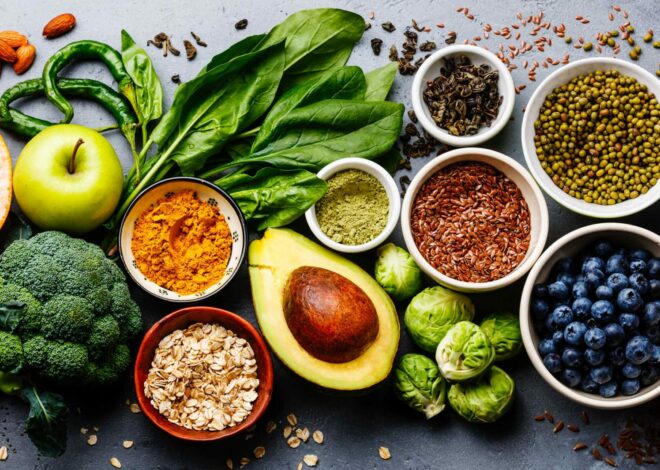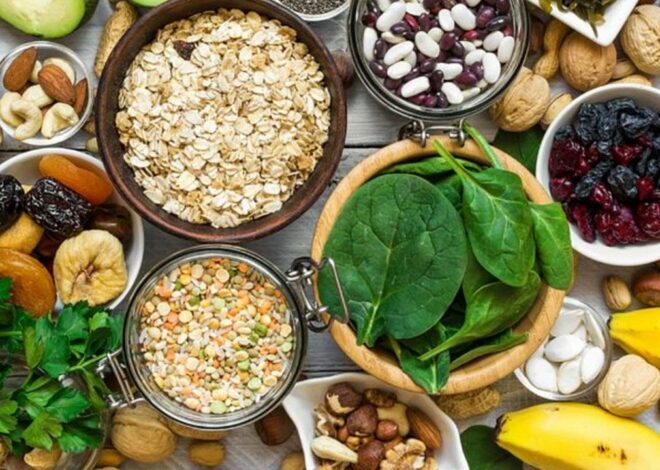
How to Get More Vitamin D from Fortified Foods
Vitamin D is essential for maintaining healthy bones, supporting immune function, and reducing inflammation. While our bodies can produce Vitamin D through sun exposure, factors like limited sun exposure, geographic location, and lifestyle can make it challenging to get enough. Fortified foods can be a great way to boost your Vitamin D intake. In this guide, we’ll explore how to get more Vitamin D from fortified foods, with practical tips and FAQs.
What is Vitamin D?
Vitamin D is a fat-soluble vitamin that plays a crucial role in calcium absorption and bone health. There are two main types of Vitamin D: Vitamin D2 (ergocalciferol) and Vitamin D3 (cholecalciferol). While both types can be found in fortified foods, Vitamin D3 is more effective at raising blood levels of the vitamin.
Why is Vitamin D Important?
- Bone Health: Vitamin D helps the body absorb calcium, which is essential for building and maintaining strong bones.
- Immune Support: It plays a role in modulating the immune system, helping to protect against infections.
- Inflammation Reduction: Vitamin D has anti-inflammatory properties, which can help reduce the risk of chronic diseases.
Sources of Vitamin D
Sun Exposure
The skin produces Vitamin D when exposed to sunlight, specifically UVB rays. However, factors like sunscreen use, skin pigmentation, geographic location, and time of year can affect how much Vitamin D your body produces.
Natural Food Sources
Few foods naturally contain Vitamin D. These include fatty fish (like salmon and mackerel), liver, egg yolks, and certain mushrooms.
Fortified Foods
To help people get enough Vitamin D, many foods are fortified with the vitamin. This means Vitamin D is added to these foods during processing. Fortified foods are an excellent way to increase your Vitamin D intake, especially if you have limited sun exposure or dietary restrictions.
Top Fortified Foods Rich in Vitamin D
1. Fortified Milk and Dairy Products
Many milk and dairy products, such as yogurt and cheese, are fortified with Vitamin D. A cup of fortified milk typically contains about 100 IU of Vitamin D.
2. Fortified Plant-Based Milks
For those who are lactose intolerant or prefer plant-based options, many non-dairy milks (like almond, soy, and oat milk) are also fortified with Vitamin D. Check the label to ensure your preferred brand includes Vitamin D.
3. Fortified Cereals
Many breakfast cereals are fortified with a variety of vitamins and minerals, including Vitamin D. Pairing fortified cereal with fortified milk can give you a significant Vitamin D boost in one meal.
4. Fortified Orange Juice
Some brands of orange juice are fortified with Vitamin D. This can be a great option for those who don’t consume dairy products.
5. Fortified Margarine and Butter
Certain margarines and spreads are fortified with Vitamin D. Using these on your toast or in cooking can help increase your intake.
6. Fortified Tofu
Some tofu products are fortified with Vitamin D, making them a good option for vegetarians and vegans looking to increase their Vitamin D intake.
7. Fortified Mushrooms
Mushrooms exposed to ultraviolet light during growth can provide a significant amount of Vitamin D. Look for fortified mushrooms at your grocery store.
How to Incorporate Fortified Foods into Your Diet
Breakfast
- Fortified Cereal with Milk: Start your day with a bowl of fortified cereal and fortified milk.
- Smoothies: Blend fortified plant-based milk with fruits and a handful of fortified cereals or oats.
- Toast with Fortified Margarine: Spread fortified margarine on whole-grain toast for a simple breakfast.
Lunch
- Fortified Orange Juice: Enjoy a glass of fortified orange juice with your meal.
- Salads with Fortified Tofu: Add fortified tofu to your salads for a nutrient boost.
Dinner
- Fortified Dairy or Plant-Based Milk in Recipes: Use fortified milk in soups, casseroles, or mashed potatoes.
- Mushroom Dishes: Incorporate fortified mushrooms into your pasta, stir-fries, or as a side dish.
Snacks
- Yogurt Parfait: Layer fortified yogurt with fruits and nuts for a nutritious snack.
- Cheese and Crackers: Pair fortified cheese with whole-grain crackers for an easy and delicious snack.
Tips for Maximizing Vitamin D Absorption
Combine with Healthy Fats
Vitamin D is fat-soluble, meaning it is best absorbed when consumed with fat. Pair fortified foods with healthy fats like avocados, nuts, seeds, or olive oil.
Spread Intake Throughout the Day
Distribute your intake of fortified foods across meals and snacks to help maintain steady Vitamin D levels throughout the day.
Monitor Serving Sizes
Check the serving sizes on labels to ensure you’re getting the expected amount of Vitamin D. Larger or smaller portions can affect your overall intake.
Potential Challenges and Solutions
Dietary Restrictions
If you have dietary restrictions (e.g., lactose intolerance, veganism), seek out fortified alternatives like plant-based milks, fortified tofu, and fortified cereals.
Label Reading
Not all brands fortify their products with Vitamin D. Always read labels to ensure you’re choosing fortified options.
FAQs About Vitamin D and Fortified Foods
How much Vitamin D do I need daily?
The recommended daily allowance (RDA) for Vitamin D varies by age, sex, and life stage. For most adults, it ranges from 600 to 800 IU per day. However, some individuals may require more, especially those with limited sun exposure or certain medical conditions.
Can I get enough Vitamin D from fortified foods alone?
While fortified foods can significantly boost your Vitamin D intake, it’s important to combine them with other sources like sun exposure and natural food sources when possible. In some cases, supplements may also be necessary.
Are there any risks associated with consuming too much Vitamin D from fortified foods?
Vitamin D toxicity is rare and usually occurs from excessive supplementation rather than food intake. However, it’s still important to monitor your overall intake and consult with a healthcare provider if you have concerns.
What are the symptoms of Vitamin D deficiency?
Symptoms of Vitamin D deficiency can include fatigue, bone pain, muscle weakness, and mood changes. Severe deficiency can lead to conditions like rickets in children and osteomalacia in adults.
Can fortified foods interact with medications?
Certain medications can affect Vitamin D metabolism. If you are on medication, consult your healthcare provider to ensure fortified foods and Vitamin D supplements are safe for you.
Are there any groups of people who are at higher risk for Vitamin D deficiency?
Yes, certain groups are at higher risk, including older adults, people with darker skin, individuals living in northern latitudes, those with limited sun exposure, and people with certain medical conditions (e.g., malabsorption syndromes).
How can I know if a food is fortified with Vitamin D?
Check the nutrition label and ingredient list. Fortified foods will typically list Vitamin D content on the label and may have it listed in the ingredients.
Is Vitamin D2 or D3 better in fortified foods?
Vitamin D3 is generally considered more effective at raising and maintaining adequate Vitamin D levels in the blood compared to Vitamin D2. When possible, choose foods fortified with Vitamin D3.
Can children consume fortified foods to meet their Vitamin D needs?
Yes, fortified foods can be a good way for children to meet their Vitamin D needs. Ensure that the foods are age-appropriate and that serving sizes are adjusted for their dietary requirements.
What should I do if I’m still not getting enough Vitamin D from fortified foods?
If you’re still not meeting your Vitamin D needs through fortified foods, natural sources, and sun exposure, you may need to consider a Vitamin D supplement. Consult with a healthcare provider to determine the appropriate dosage.
Conclusion
Getting enough Vitamin D is essential for overall health, and fortified foods can play a significant role in meeting your daily needs. By incorporating a variety of fortified foods into your diet and following practical tips, you can boost your Vitamin D intake effectively. Always remember to read labels, combine fortified foods with healthy fats, and consult with a healthcare provider if you have any concerns or specific dietary needs. With the right approach, you can ensure you’re getting enough Vitamin D to support your health and well-being.
- Pele’s Fire OG Marijuana Strain - July 20, 2024
- Lemon Oasis Marijuana Strain - July 20, 2024
- Amnesia Flash Marijuana Strain - July 20, 2024


